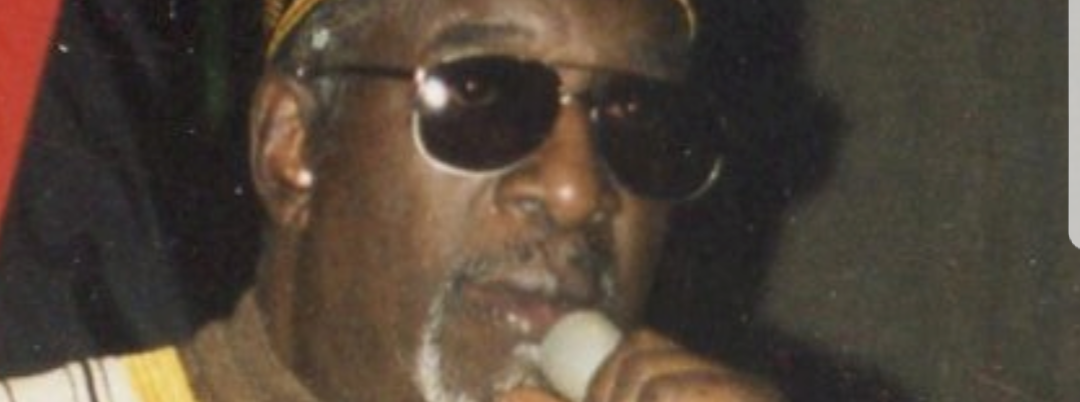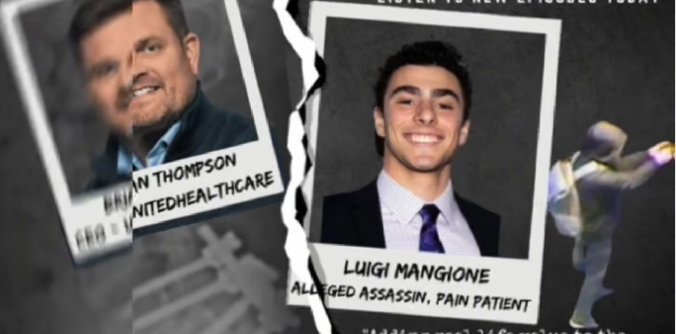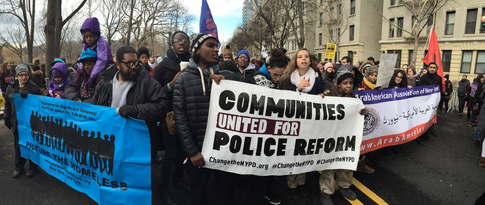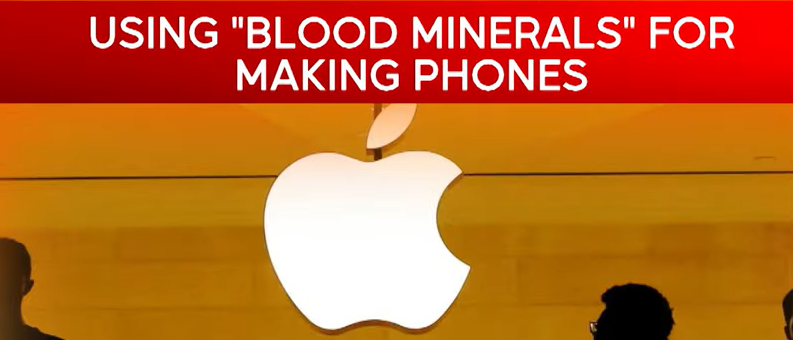While it is easy to imagine Robert “Sonny” Carson holding Court among the great heroes and heroines of the Black Pantheon of ancestors, in these challenging times, here on earth, we need the qualities he possessed: strength, insight, tenacity and wisdom.
Today is his birthday so I salute him.
He was courageous and resilient; he was an organizer, a builder and was adept at attracting men and women of vision and intellect capable of generating ideas to address social problems with reasonable outcome; we miss the input of that thinker and activist.
Remembering Sonny on his Birthday May 18, 2018, one day before Malcolm X’s, we recognize the world has changed in the 15-years since Sonny Carson made his transition to join the ancestors. However, one of his most consistent commitments has been the challenge in keeping a focus on the Prison Industrial Complex that, on a daily basis entraps and psychologically and emotionally emasculates Black man and Black womanhood– languishing in the bowels of a system that instead of rehabilitating, debilitates.
In his day, Sonny would receive more than a hundred calls from prison inmates across the country complaining of ill-treatment, bad food, lack of quality reading materials, the need for constructive training in arts, crafts and educational and industrial skills, that not only assuages the rigors of prison life but could also be parlayed meaningfully upon release as a challenge and check to recidivism.
Many others either pleaded for assistance in securing bail or what measures to apply in pleading their cases in pending trials or even appeals.
Clearly, Carson was engaged in an unending task but the nature of its disposition, given recent developments, attention to that singular task is even more pressing. Much has transpired in criminal justice since Sonny Carson’s passing, but, in a way, he set in motion one idea whose ultimate consequences he did not live to see play out.
To understand Sonny Carson’s monumental impact on New York I must comment on several other major players in this city’s distant and recent history; but the story always comes bs
Very early in the Rudolph Giuliani administration –after he helped orchestrate the defeat of David Dinkins through race-baiting and became Mayor of New York City– his propaganda apparatus posted signs in the Black Community such as “Rudy G. Fights Racism.” In fact, Mayor Giuliani turned out to be the most polarizing leader and racist who ever held the chief executive office in New York City. He even earned the moniker, “Brutaliani!”
Rudy was on a downward spiral in the court of public opinion after his disastrous closing years then “9-11” happened. In that enormous misfortune, the city, state and nation, even the world, rallied to offer New York City support.
In time, the obfuscating mayor milked the resources and moral support lavished on the city through unending media appearances, ultimately being recast by image-makers, falsely, as “America’s Mayor.” As the Civil Rights activist Rev. Al Sharpton remarked during those sorrowful and challenging times: “Any leader responding to such a calamity given the forthcoming moral and material support would have performed in the same manner as Giuliani.”
Now, if the “America’s Mayor” title was really worthwhile, the next elevation would have been either governor or president. Fortunately, however, the American people recognized a sham when they saw one and twice rejected Giuliani’s efforts in his 2012 and 2016 quest to become president. Unfortunately, Sonny did not live to see that well-deserved rejection; but he did, in the spirit of the “Million Movement” call for a “Million Voter Registration.”
Significantly, five years after his passing, the “Million Voter Movement,” must have played some role in helping to elect Barack Obama in 2008 and again in 2012.
All this notwithstanding, in the years since Carson’s death, there have been a number of developments in Criminal Justice reform. During the Obama administration, with Eric Holder as Attorney General, efforts were made to reform some aspects of the system, given America is considered the prison capital of the world and Black and Brown persons comprise nearly ninety percent of prison population. The Obama administration was successfully in getting judges to use discretion instead of the diabolical mandatory minimum sentences guidelines; Obama also worked to reverse the discriminatory sentencing regime whereby prison terms for 10 times more for crack convictions relative to powder cocaine, which is mostly abused by Whites.
Lil Nickelson writes: “Mass incarceration in the U.S. has grown; in 2012, the total of 2.23 million people was nearly seven times the number in 1972. The three levels of government together had expanded the nation’s penal population by more than 1.9 million people since 1972. The U.S. incarceration rate is unsurpassed internationally; it accounts for about 23 percent of the world total.”
As such, and to combat the inequity such numbers represent, a list of reforms was instituted under the Obama Administration.
Since the beginning of the Trump administration, steps have been taken to roll-back the Obama administration Criminal Justice Reforms, in this and many other areas, all as part of a hardline law and order propaganda mode of operation. Some believe, however, it’s all part of a grand scheme to eliminate every achievement of the nation’s first Black President. More precisely, as General Hayden, former CIA head diplomatically explained –some of President Trump’s efforts to “undo Obama’s legacy,” is a futile attempt to erase his record of having been “his predecessor. This is classic diplomatic speak for a vindictive mindset and associated actions.
At the recently concluded National Action Network National Convention 2018, a panel entitled “The State of American Justice in the Age of Trump” was moderated by Michael Hardy, Esq., with panelists Tahanie A. Aboushi, Benjamin Crump, Donna Lieberman and Joseph Tacopina. A great deal of facts and figures were supplied by these experts but Mr. Crump, who has been the “point Legal Eagle” representing families in the murders of Trayvon Martin, Eric Garner, Gurley, Michael Brown and the most recent case of Stephon Clarke in California was compelling.
Even more, Donna Lieberman’s figures were very convincingly devastating about the “railroading business in American Criminal Justice.” Still, Crump spoke to police misconduct in challenge to black and white persons suspected of being in breech of the law. In the case of blacks, who have no “kills” to their credit, the police shoot to kill and do just that. Now, with white suspects who do kill, the police generally apprehend them unharmed and alive. Some are treated to refreshments and one even taken to McDonald for a snack. In the recent Florida school killing, the police seemed to know the suspect patronized MacDonald’s before he was apprehended unharmed. Even the most recent “Waffle House” killing; the suspect, though the Black hero disarmed him, he too was apprehended unharmed and fled, even though he had killed four and wounded several. More important, whites are apprehended alive while Blacks are shot dead because, in the encounter, the official line in most cases is, “cops fear for their lives.” Still, the finest marksmen never shoot to wound, but ended up killing Black men and women.
Next Crump spoke about the roll back of Obama’s Criminal Justice initiatives and the increasing numbers of For-profit prisons being built and managed across the country. This means its open season on Black and Brown men and women to fill the cells thus created, particularly in those towns upon which prison income is a significant means of support.
Elsewhere, in a discussion on “David N. Dinkins’ 21st Annual Leadership and Public Policy Forum” held at Columbia University’s Miller Theater, Lil Nickelson in the Harlem Community Newspaper of May 3, 2018, p. 12, reported on the topic, “The Incarceration Crisis that Threatens America’s Democracy.”
There, Eric H. Holder, himself a Columbia University graduate and Attorney General in the Obama Administration, was the Keynote Speaker. Holder recounted, “The policies and practices we put into place during the Obama administration like our Smart on Crime initiatives are being rescinded by the current administration. The plan to rectify mass incarceration hasn’t changed.” These include:
1. Reduce mandatory sentences;
2. Give credit for good behavior for attending rehab programs;
3. Increase funding for alternative incarceration programs;
4. Eliminate sentencing disparities for uses of powder cocaine versus crack cocaine;
5. Financial support for re-entry programs.
Calling upon lawyers in general to render pro bono service to those grappling with challenges to the system, Mr. Holder continued, as Nickerson recounted: “Racial and gender disparities exist in the criminal justice system from a person’s first interaction with police to sentencing through release and probation. Mass incarceration of our men means they are absent from their homes, children’s lives, families and communities for long periods. Most women in the system have experienced sexual and/or physical abuse during their lives and every time they go through pat down traumatizes them. Women are also most likely to lose custody of their children during their incarceration. Men who are fathers leave prison at least $17,000 in debt for back child support which doesn’t stop adding up while in jail.”
“More should be done to rehabilitate and educate inmates to return them to society as productive members. When people serve their sentences, their past shouldn’t label them present or forever; ex-felons should not be the term used to describe them the rest of their lives.”
One item not mentioned in this report is the issue of disfranchisement of incarcerated individuals. Many states, particularly in the South, use prison as a mechanism to deprive persons of the fundamental right of being an American, the right to vote.
These were all issues that would have engaged the full support and participation of Sonny Carson.
Like most Black urban youth in the 1950s and 1960s, ran afoul of the law. He was incarcerated, then he served in the U.S. Army in Korea. He soon found his destiny; he became an activist. His first venture was in the economic arena. He advocated that Blacks were entitled to work where they shopped; the white-owned stores. Next, he insisted “Mom and Pop” shops be recognized and owned. As a youth he belonged to the Bishops gang and even sold drugs, but this changed after his arrest and time served in prison.
The movie, “The Education of Sonny Carson” chronicled his early career. For long, especially after his death, there has been talk of a Sequel under the Title “Sonny Carson: The Final Triumph,” after a book of that name.
Carson became involved in education issues, serving as President of the Brooklyn Branch of the Urban League. He was a key player in the famous Ocean-Hill/Brownsville School boycott that resulted in Community Control of School Boards in New York city.
In fact, the true purpose of that movement was to secure jobs for Black and Brown educators in a system overwhelmingly populated by Black and Latino stories: whereas the Superintendents, Principals, Assistant Principals and teachers were overwhelmingly White.
This was also a challenge to Whites educating Blacks and the cultural ramifications this form of employment represented. Les Campbell who changed his name to Jitu Weusi, was a principal associate of Sonny Carson and they both received bad press for their bold and uncompromising activism.
Sonny advocated for the founding, institutional recognition and four-year status for Medgar Evers College in Brooklyn as part of the City University of New York (CUNY) system. During the 1960s upheaval then New York City Mayor John Lindsay appealed to Sonny as a peacemaker. He was instrumental in helping to establish Bedford-Stuyvesant Restoration Corp as an economic revitalization engine for the Black Community in that region of Brooklyn.
Expressing an interest in tenant/landlord disputes and exploitation, Sonny then challenged the “Crack Epidemic” plaguing the Black Community, and in process he “attended too many funerals.” In his office he kept posters of images of Black men-lynched and hanging by ropes from trees and other devices. Founding Black Men Against Crack and even more important The Committee to Honor Black heroes, he advocated for and a number of streets and schools were successfully named in honor of Black Heroes in Brooklyn. Today there is Marcus Garvey Boulevard and Malcolm X Boulevard and Harriet Tubman Avenue. Malcolm X or Malik Shabazz School in Bed-Stuy and Toussaint L’Ouverture School in Crown Heights were some of his successes. Called the “Mayor of Bed Stuy,” “Abubadika” (He who leads his people) and now the “Co-naming” “Abubadikaville,” for his efforts on that community’s behalf; though Community Board 3 voted to name three blocks along Gates Avenue in his honor (Classon Avenue through Bedford Avenue, Nostrand avenue and Marcy’s Avenue), sadly, the City Council under the Speakership of Christine Quinn voted down the measure.
Sonny Carson’s biggest and most important achievement was the repatriation of his ancestor Samuel Carson to Ghana, challenging the “Door of No Return” by opening the “Door of Return.”
This extraordinary feat of Repatriation was successfully accomplished 20 years ago on August 1, 1998; the burial took place beside the river at a place called Assin Manso. There, he was buried beside an enslaved female named Crystal from Jamaica and this site serves as a place of Pilgrimage and point of departure for African-Americans seeking their roots on the African continent.
This return of the “Runaway Samuel Carson” became the symbol to inaugurate the First Emancipation Day Celebration in Ghana, that has now gained credence and credibility across Africa and the Black world.
This and much more we have to thank Sonny Carson for accomplishing. Not only must we educate our young about our heroes, but their leadership, courage, insightfulness, even daring must symbolically serve as inspiration to empower and propel African-Americans as we face the daily challenges so often manufactured as a mechanism of cultural, social and political stultification.
In that famous lyric “Dancing with My Father” Luther Vandross asked his father to return and so we too request of Sonny Carson, return that undaunting inspiration, courage and insightfulness so African people down can boldly meet the challenges in these enormously challenging times.







